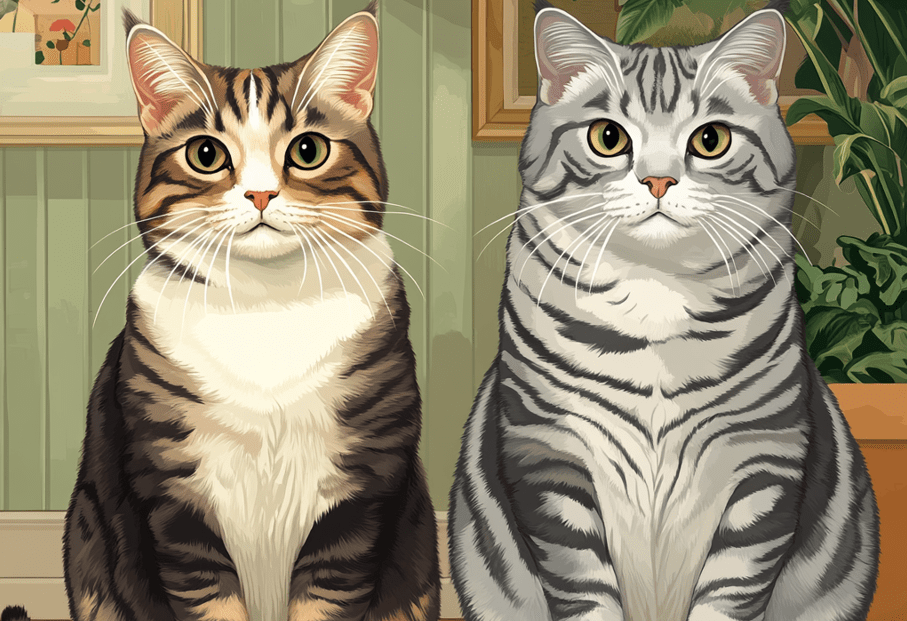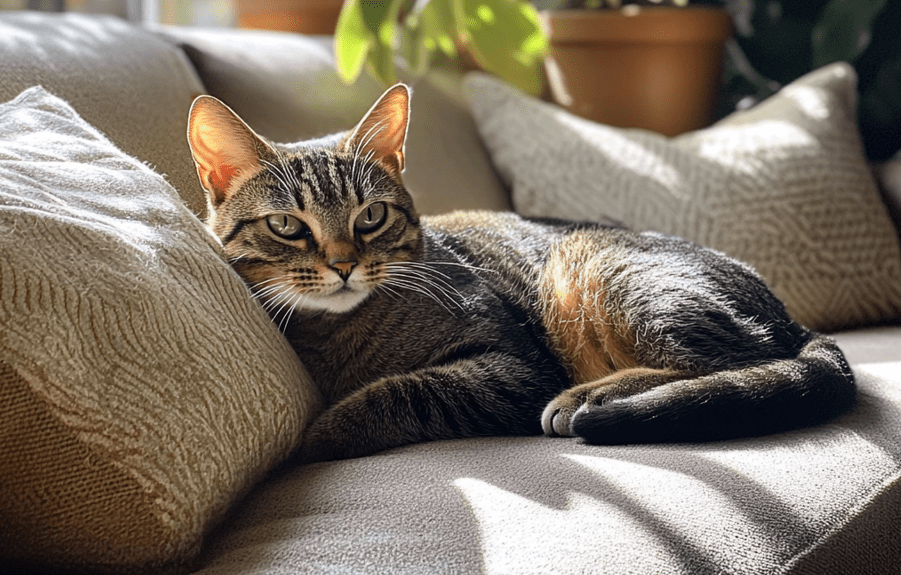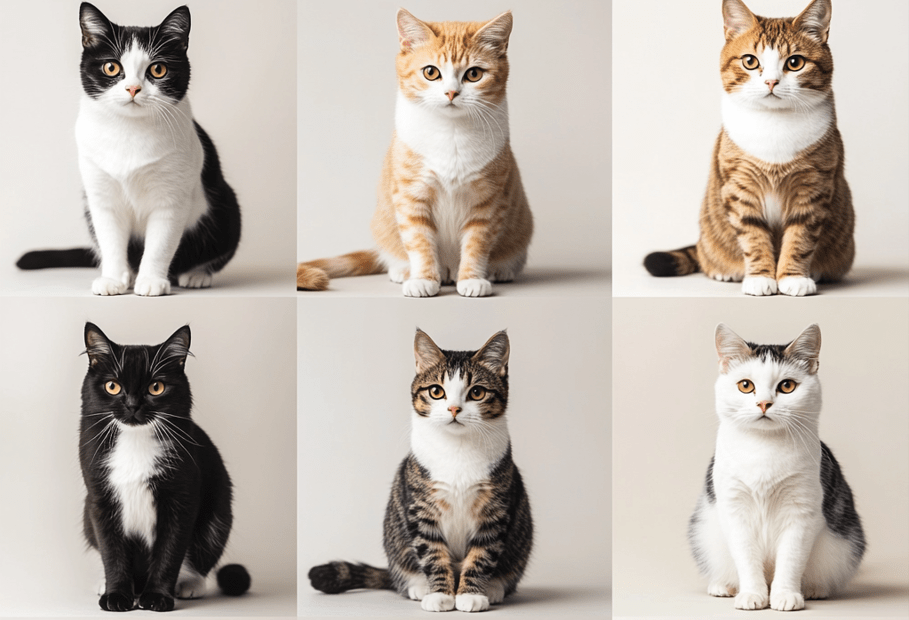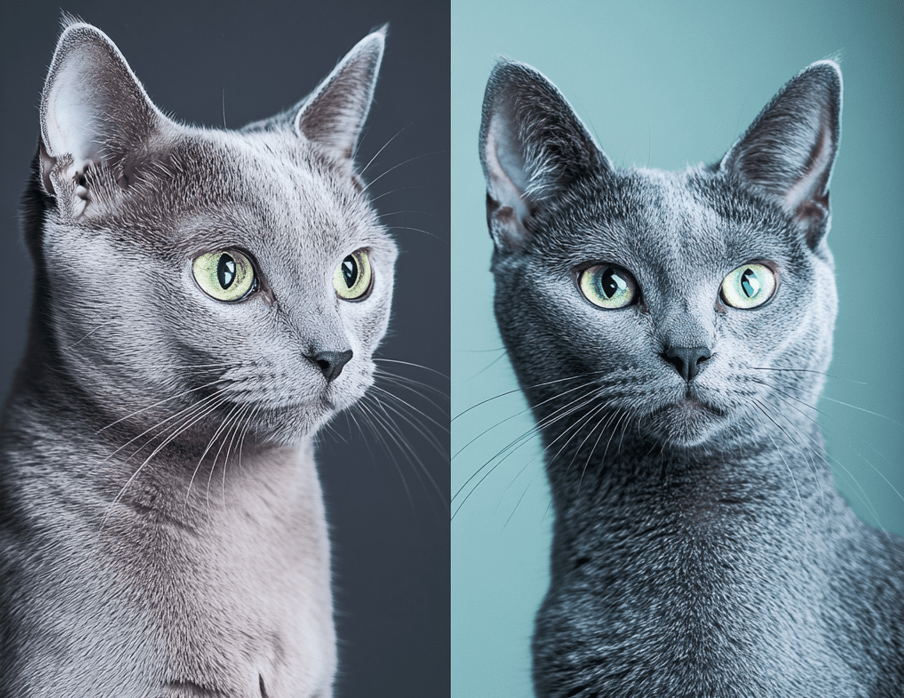
Domestic Shorthair cats, with their vibrant coat patterns and affectionate, adaptable natures, are cherished companions in countless homes. Despite their resilience, these felines can experience stress that affects their health and happiness. Recognizing stress in Domestic Shorthairs is vital for ensuring their well-being, as unaddressed anxiety can lead to behavioral issues or medical conditions. This comprehensive guide explores the signs of stress, common triggers, and practical solutions to help your Domestic Shorthair thrive. By understanding and managing stress, you can create a nurturing environment that keeps your cat calm, healthy, and content.
Understanding Stress in Domestic Shorthairs
Stress in cats is a physiological and emotional response to perceived threats or disruptions, activating their fight-or-flight instincts. Domestic Shorthairs, known for their diverse genetics and moderate builds (6-16 pounds), may seem sturdy, but they’re sensitive to changes in their environment or routine. Chronic stress can weaken immunity, exacerbate conditions like feline lower urinary tract disease (FLUTD), or cause behavioral shifts. Identifying stress early allows you to intervene, preventing long-term health issues and fostering a harmonious bond with your feline friend.
Why Domestic Shorthairs Are Susceptible to Stress
Several factors make Domestic Shorthairs prone to stress:
Environmental Sensitivity: Their preference for familiar surroundings means changes, like moving or loud noises, can be unsettling.
Social Dynamics: As individuals with varied temperaments, they may react to new pets, people, or lack of attention with anxiety.
Health Vulnerabilities: Domestic Shorthairs are prone to urinary issues, obesity, or allergies, which stress can worsen.
Mixed Heritage: Their diverse genetics lead to a range of personalities, from bold to shy, influencing stress responses.
Understanding these traits helps you tailor solutions to your cat’s unique needs.
Signs of Stress in Domestic Shorthairs
Stress manifests in behavioral, physical, and environmental ways. Recognizing these signs is the first step to helping your Domestic Shorthair. Below, we categorize symptoms for clarity.
Behavioral Signs
Hiding or Withdrawal: A stressed Domestic Shorthair may retreat to secluded spots, like under beds or in closets, avoiding interaction.
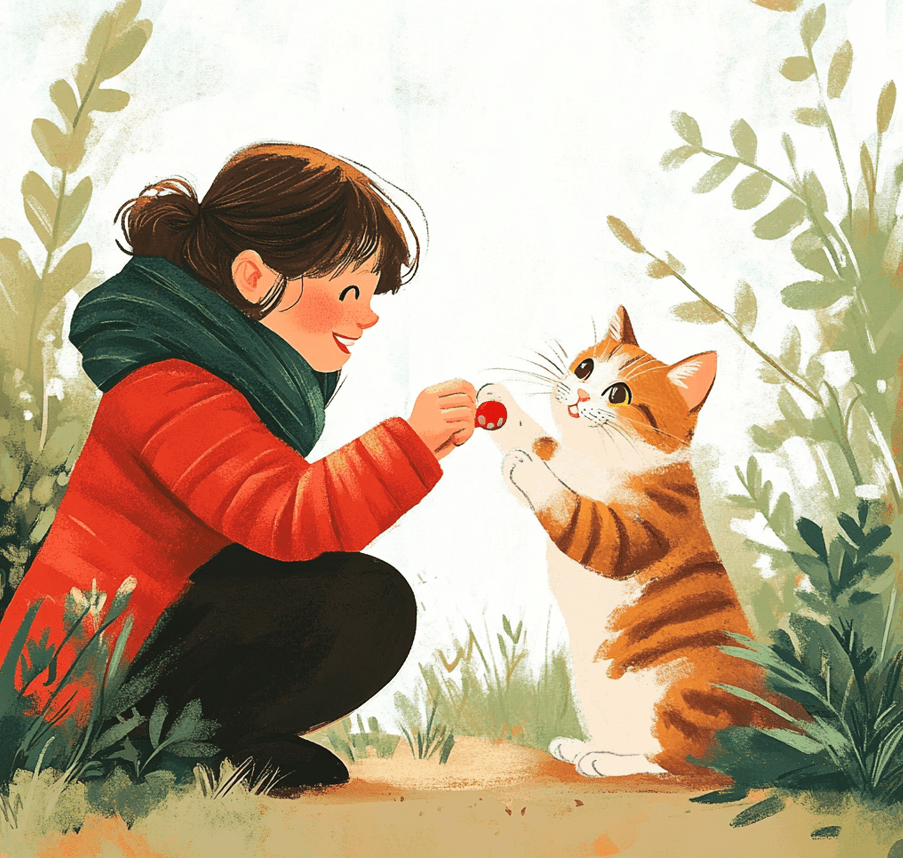
Excessive Grooming: Over-grooming, causing bald patches or skin irritation, is a common stress coping mechanism.
Litter Box Issues: Urinating or defecating outside the box, or changes in litter habits, may signal stress or FLUTD.
Aggression or Irritability: Sudden hostility toward people, pets, or objects can indicate discomfort.
Vocalization Changes: Increased meowing, yowling, or unusual silence may reflect anxiety.
Appetite Changes: Eating less or refusing food is a frequent stress response.
Physical Signs
Weight Fluctuations: Unexplained weight loss or gain, often tied to appetite changes, can signal stress.
Digestive Upset: Vomiting or diarrhea may occur due to stress-induced gut sensitivity.
Lethargy: Reduced energy or playfulness suggests stress or underlying health issues.
Tense Body Language: Dilated pupils, flattened ears, or a crouched posture indicate acute stress.
Environmental Signs
Avoiding Favorite Spots: If your cat shuns their usual perch or bed, stress may be altering their comfort zones.
Increased Scratching: Excessive scratching of furniture or walls is a stress-relief behavior.
Restlessness: Pacing or inability to settle can reflect anxiety-driven discomfort.
Monitoring these signs helps you detect stress early and act promptly.
Common Stress Triggers in Domestic Shorthairs
Identifying the cause of stress is crucial for effective management. Below are frequent triggers for Domestic Shorthairs:
Environmental Changes: Moving homes, rearranging furniture, or new scents (e.g., cleaning products) disrupt their sense of security.
Social Stressors: New pets, visitors, or changes in household dynamics (e.g., a new baby) can unsettle your cat.
Routine Disruptions: Altered feeding, play, or litter box schedules cause anxiety in routine-loving Domestic Shorthairs.
Health Issues: Pain from dental disease, urinary infections, or arthritis can manifest as stress.
Boredom: Lack of mental or physical stimulation leads to frustration and stress.
Loud Noises: Thunderstorms, fireworks, or construction can trigger acute stress responses.
Litter Box Problems: Dirty, cramped, or poorly placed boxes cause stress, especially if linked to urinary issues.
Pinpointing the trigger allows you to address the root cause effectively.
Solutions to Manage and Reduce Stress
Helping your Domestic Shorthair cope with stress involves environmental, behavioral, and health-focused strategies. Below are practical solutions to create a calm, supportive environment.

1. Create a Safe and Stable Environment
A predictable setting reduces anxiety and helps your Domestic Shorthair feel secure.
Designate Safe Spaces: Provide cozy hideaways, like cat igloos or beds, in quiet areas where your cat can retreat undisturbed.
Minimize Changes: Introduce new furniture, scents, or routines gradually. For example, keep old bedding during a move to retain familiar smells.
Use Pheromone Diffusers: Feliway Classic diffusers mimic calming feline pheromones, reducing stress. Place them in high-traffic areas or near safe spaces.
Control Noise: Use white noise machines or close windows during loud events, like storms, to dampen startling sounds.
A stable environment fosters relaxation and reduces stress triggers.
2. Enrich Their Environment
Mental and physical stimulation prevents boredom and channels energy positively.
Interactive Toys: Offer feather wands, laser pointers, or treat-dispensing toys, like PetSafe Funkitty Egg-Cersizer, to engage your cat’s hunting instincts.
Vertical Spaces: Install cat trees or shelves, such as the Armarkat Cat Tree, for climbing and observation, boosting confidence.
Window Perches: A perch, like the K&H EZ Mount, lets your cat watch birds or outdoor activity, providing mental stimulation.
Scratching Posts: Sturdy posts, like the SmartCat Pioneer, satisfy scratching needs and reduce stress-related marking.
Rotate toys weekly to maintain interest and prevent monotony.
3. Maintain a Consistent Routine
Domestic Shorthairs thrive on predictability, making routines a powerful stress reducer.
Regular Feeding: Feed at the same times daily (e.g., 8 AM and 6 PM) with measured portions to create security. Use foods like Hill’s Science Diet Adult for balanced nutrition.
Daily Play: Schedule 5-10 minute play sessions twice daily to release energy and strengthen your bond.
Litter Box Maintenance: Scoop boxes daily and change litter weekly to ensure a clean, inviting space.
Grooming Schedule: Brush weekly with a soft brush, like the Safari Self-Cleaning, to reduce stress from grooming-related discomfort.
Consistency reinforces your cat’s sense of control, easing anxiety.
4. Optimize Litter Box Conditions
A stress-free litter box environment is critical, given Domestic Shorthairs’ susceptibility to urinary issues.
Follow the N+1 Rule: Provide one litter box per cat plus one extra. For one cat, use at least two boxes.
Choose Spacious Boxes: Large, low-entry boxes, like the Petmate Giant, accommodate their size (7-12 pounds for females, 10-16 for males).
Use Unscented Litter: Dust-free, unscented litter, such as Dr. Elsey’s Precious Cat, minimizes irritation and encourages use.
Place Strategically: Position boxes in quiet, private areas away from food, water, or noisy appliances.
Clean, accessible boxes reduce stress and support urinary health.
5. Foster Healthy Social Interactions
Balanced social engagement prevents stress from isolation or overstimulation.
Spend Quality Time: Pet, groom, or talk to your Domestic Shorthair daily to reinforce trust. Respect their boundaries to avoid overwhelm.
Introduce Gradually: When adding pets or people, use scent swapping (e.g., swapping bedding) and controlled meetings to ease transitions.
Monitor Multi-Cat Homes: Ensure each cat has their own resources (food bowls, beds, boxes) to prevent competition-related stress.
Provide Attention: Offer play or cuddles based on your cat’s personality, whether outgoing or reserved.
Healthy interactions build emotional security and reduce anxiety.
6. Schedule Regular Veterinary Checkups
Stress can mask or stem from health issues, making vet visits essential.
Annual or Biannual Exams: Regular checkups monitor weight, dental health, and urinary function, catching stress-related conditions early.
Urinalysis and Bloodwork: Tests detect FLUTD, kidney issues, or infections that may cause stress. For example, high urine pH may indicate crystals.
Dental Care: Address gingivitis or tooth resorption, which can cause pain and stress, with cleanings every 1-2 years.
Behavioral Consults: If stress persists, a vet or feline behaviorist can recommend tailored interventions, like environmental adjustments.
Early detection improves outcomes and reduces stress-driven health issues.
7. Consider Calming Aids and Supplements
Supplements or calming products can support stress management, especially for chronic cases.
Pheromone Products: Feliway sprays or collars provide portable stress relief, complementing diffusers.
Calming Supplements: Zylkene, containing alpha-casozepine, promotes relaxation without sedation. Administer as directed, typically one capsule daily for a 10-pound cat.
L-Theanine: Found in Composure chews, this amino acid reduces anxiety. Use one chew per 10 pounds, per vet advice.
Nutritional Support: Diets like Royal Canin Calm include hydrolyzed milk protein to ease stress, ideal for sensitive Domestic Shorthairs.
Consult your vet to ensure calming aids are safe and effective for your cat.
8. Monitor and Manage Weight
Obesity, common in Domestic Shorthairs, can exacerbate stress-related issues like FLUTD or joint pain.
Check Body Condition: Use a body condition score chart to ensure a defined waistline and palpable ribs (ideal score: 4-5/9).
Measure Portions: Feed 20-25 kcal per pound of ideal body weight daily (e.g., 200-250 kcal for a 10-pound cat), using a measuring cup.
Encourage Activity: Use puzzle feeders or laser pointers for daily play to maintain a healthy weight and reduce stress.
Weight control supports physical and emotional health, minimizing stress.
Stress-Related Health Conditions in Domestic Shorthairs
Stress can contribute to or worsen several conditions, making early recognition critical.
Feline Lower Urinary Tract Disease (FLUTD)
Stress is a major trigger for FLUTD, causing cystitis or urethral obstructions. Symptoms include straining, blood in urine, or litter box avoidance. Solutions include hydration (wet food, fountains) and stress reduction.

Obesity
Stress-related overeating or inactivity can lead to obesity, straining joints and kidneys. A balanced diet and play prevent weight gain.
Gastrointestinal Issues
Stress may cause vomiting, diarrhea, or appetite loss. Consistent routines and calming aids stabilize digestion.
Immune Suppression
Chronic stress weakens immunity, increasing infection or allergy risks. Enrichment and veterinary care bolster health.
Addressing stress holistically prevents these conditions and enhances well-being.
The Role of Observation in Stress Management
Regular observation is key to spotting stress in Domestic Shorthairs, as signs can be subtle.
Track Behavior: Note changes in grooming, eating, or litter use in a journal or app, like PetDesk.
Monitor Social Cues: Observe reactions to people, pets, or noises to identify triggers.
Check Physical Health: Look for weight loss, dull coat, or lethargy, which may tie to stress or illness.
Consistent monitoring enables quick intervention, preventing escalation.
Choosing the Right Products for Stress Relief
High-quality products enhance stress management efforts:
Pheromone Diffusers: Feliway Classic or Comfort Zone for calming effects.
Calming Treats: VetriScience Composure or Pet Naturals Calming chews.
Toys: PetSafe Bolt Laser or Trixie Activity Board for engagement.
Litter Boxes: Nature’s Miracle High-Sided for comfort and cleanliness.
Cat Trees: Go Pet Club or Frisco for safe, elevated spaces.
Read reviews, check vet endorsements, and consult your veterinarian for suitability.
Common Mistakes to Avoid
When managing stress in Domestic Shorthairs, avoid these pitfalls:
Ignoring Subtle Signs: Dismissing hiding or appetite changes delays intervention.
Punishing Behavior: Scolding for litter issues or scratching worsens stress.
Overwhelming Attention: Forcing interaction can heighten anxiety.
Skipping Vet Visits: Health issues mimicking stress need professional diagnosis.
Empathetic, proactive care prevents errors and promotes calm.
Advances in Feline Stress Management
Innovations improve stress care for Domestic Shorthairs:
Behavioral Research: Studies clarify stress triggers, informing better solutions.
Smart Enrichment: Automated toys, like Petronics Mousr, engage cats remotely.
Calming Diets: Formulas with tryptophan or casein reduce anxiety.
Telemedicine: Virtual vet consults address stress promptly.
These advancements empower owners to create stress-free lives for their cats.
Conclusion

Recognizing stress in Domestic Shorthairs is a vital skill for ensuring their health and happiness. By identifying behavioral, physical, and environmental signs—such as hiding, over-grooming, or litter box issues—you can address triggers like routine changes or health problems. Solutions like environmental enrichment, consistent routines, calming aids, and veterinary care reduce anxiety, preventing conditions like FLUTD or obesity.
With dedication and these strategies, your Domestic Shorthair can enjoy a calm, fulfilling life. For personalized advice, consult your veterinarian or a feline behaviorist to craft a stress management plan for your beloved companion.

